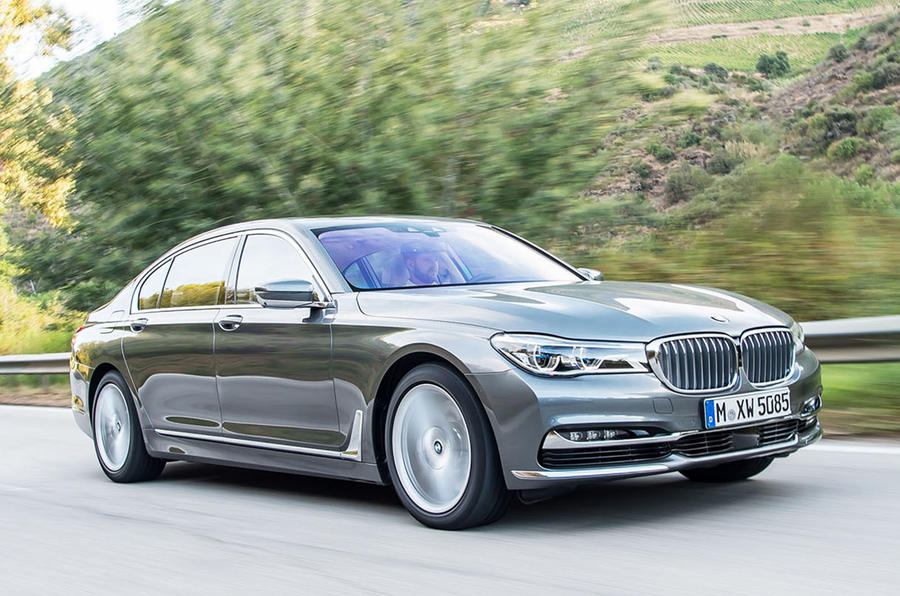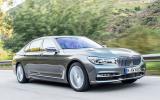What is it?
The sixth-generation BMW 7 Series is a pivotal new luxury saloon that looks set to make quite an impact on the luxury car ranks when it goes sale here in November following a debut at next month’s Frankfurt motor show.
As befits its range-topping status, the new four-door comes loaded with a host of new technology. Among its highlights are intelligent lightweight carbonfibre construction solutions, new-generation six-cylinder petrol and diesel engines, a high-quality interior with the latest in internet-supported connectivity and gesture-based controls, stereo camera and radar-based autonomous driving and safety features and an optional smart key that allows you to monitor functions such as fuel range and interior temperature from the palm of your hand.
Also available with an autonomous parking function that enables you to step out and park the car it at the press of a button, it aims to launch a serious challenge to the sales dominance of the Mercedes-Benz S-Class while providing stiffer competition to the Audi A8, Jaguar XJ and Lexus LS than the seven-year-old model it replaces.
The new 7 Series, which is available in both standard and long-wheelbase guises, receives an evolutionary design that helps provide it with visual continuality. But despite flaunting a bolder face than before, it lacks the outright presence of some rivals.
Its slightly sleeker form provides it with a class-leading drag co-efficient of just 0.24. In combination with a new turbocharged 3.0-litre in-line six-cylinder diesel engine in the rear-wheel-drive 730d driven here, the slippery shape contributes to exceptional combined fuel consumption of 62.8mpg and average CO2 emissions of just 119g/km.
The evolutionary approach evident in the styling is also reflected in the dimensions. At 5098mm long, 1902mm wide and 1478mm high, the new 7 Series is just 19mm longer, the same width and 7mm higher than its predecessor in standard-wheelbase guise. The long-wheelbase variant is a further 139mm longer – 18mm longer than the model it replaces – at 5238mm. Both the standard and long-wheelbase variants share the same wheelbase measurements as those of the outgoing models, at 3070mm and 3210mm respectively.
Yet while the overall appearance and size of the new 7 Series are clearly similar to the old model, its construction and engineering introduces new processes and materials that are set to revolutionise the next generation of BMW models.
Drawing on methods first explored in the development of BMW’s i models, it incorporates a number of load-bearing carbonfibre-reinforced plastic components. The lightweight material, which can be found within the header rails, sills, B-pillar, centre tunnel and C-pillar, combines with additional aluminium elements to bring a 40kg reduction in weight over its predecessor. Further weight savings have been achieved with changes to the bodyshell, which receives newly designed aluminium doors (weighing 12kg less than before) as well as an aluminium roof panel.
The new 730d as tested tips the scales at 85kg under that of the outgoing 730d, at 1755kg, making it 25kg lighter than the Audi A8 3.0 TDI and Mercedes-Benz S350 CDI. It’s also 200kg lighter than the Jaguar XJ 3.0D.
When it hits UK showrooms, the new 7 Series will be offered with the choice of two new six-cylinder engines, both mated to a standard eight-speed automatic gearbox that uses a longer final drive ratio and a shift strategy that operates in conjunction with the satellite navigation system for greater efficiency. Buyers can choose a Steptronic variant of the ZF-produced gearbox with shift paddles on the steering wheel as an option.

























































Join the debate
Add your comment
Steering
Each generation, gets more and more technology. More to go wrong, and more to spoil/ruin a good car.
Last, someone needs to sack the current designers at BMW. Recent designs have been poor, to say the least. Same at Mercedes. There 4 door Coupe models are hideous!
Q car
Why do BMW insist on every